Climate: WFP helps pastoralists in Kenya adapt to changing weather
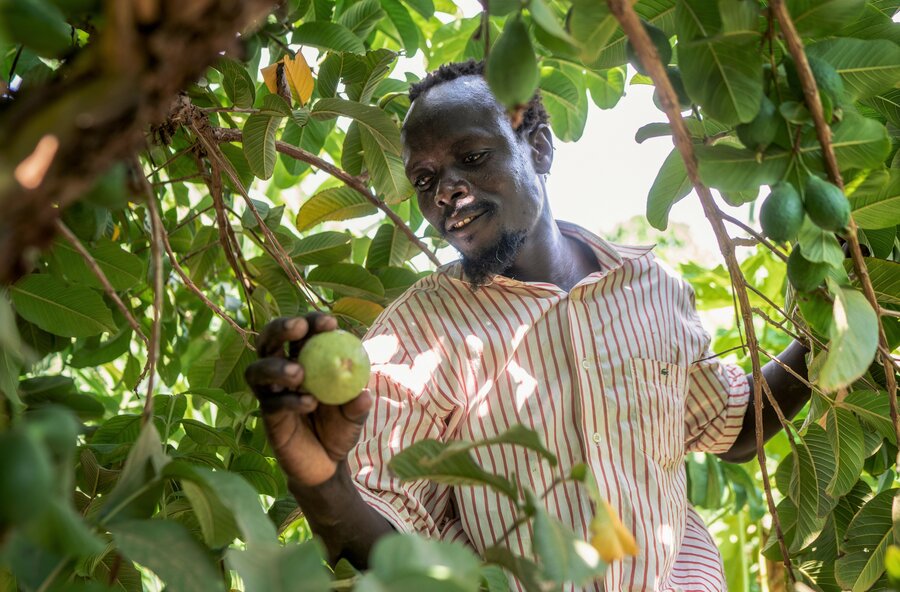
Simon is the face of adaptation, resilience, and triumph. Once a farm labourer earning meagre wages, he is now the proud owner of an oasis of nutrient-rich foods in arid and drought-ravaged northern Kenya.
Drought caused by three consecutive failed rainy seasons has left 3.1 million people food insecure in Kenya, affecting the food security of 13 million people across the Horn of Africa region.
Simon’s family were once livestock keepers, but persistent drought often cost them their animals – their only source of wealth – forcing them to abandon a traditional way of life and to seek alternative sources of income.
“I worked as a farmhand doing everything from cultivating, planting and harvesting,” says Simon.
Simon enjoyed farming. It was a new way of life – away from the unpredictability of keeping livestock. But growing food for someone else troubled him.
In 2019, he established a ‘forest of food’ by converting scrubland into an oasis of fruit trees and vegetables in Turkana County – one of Kenya’s most drought-prone regions.
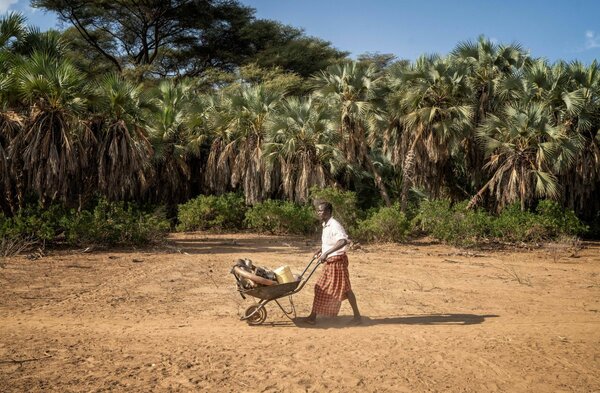
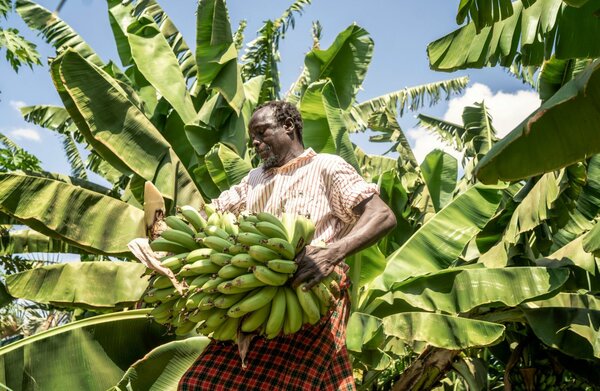
Simon honed his farming skills further by undertaking training courses from the World Food Programme (WFP) on conservation agriculture; planting techniques that involve minimal disturbance of the soil; marketing and educating himself online.
“I am growing many things,” he says. “I have guava, pawpaw , bananas, and sugarcane and over there – avocados, mangoes and many other fruits too.”
On his farm, you will also find lemongrass, sweet potatoes, pumpkins, kale, watermelons, cowpeas, spinach, onion, chillies, oranges, and cassava.
“As a parent, I have a responsibility to make sure there is food at home,” says Simon. “When I have a full stomach, I feel able to go and look for money.”
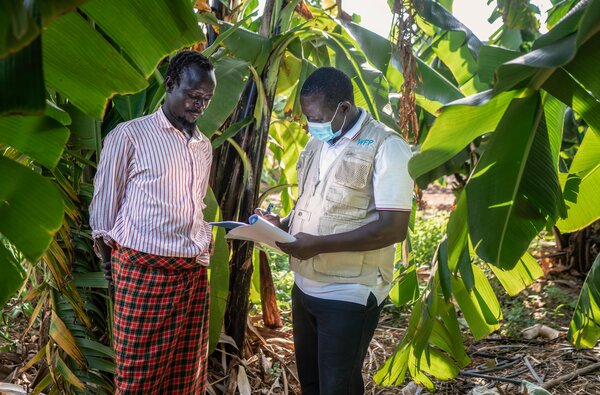
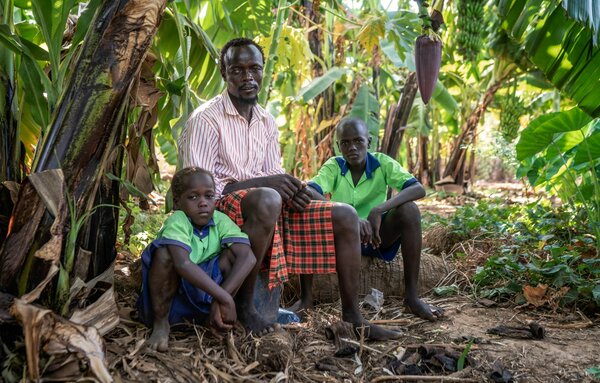
Simon is constantly looking for ways to increase efficiency on the farm, which is a source of both nourishment and income for his family of five.
At the top of his mind is lowering the cost of pumping water from the nearby Turkwell River. Currently, he uses a petrol-powered pump which costs around US$5 to irrigate the 100 x 70-metres farm.
By planting crops in sunken pits and using mulching – leaving all plant matter on the farm’s floor to retain moisture in the soil – he has reduced the number of times he waters the crop from thrice to once a week.
However, with the ongoing drought and temperatures rising to 40°C, he is forced to pump water for longer to satisfy the parched soil and compensate for high evaporation rates.
“The drought has significantly increased irrigation costs, but it has also helped because the demand for vegetables is now very high,” he says.
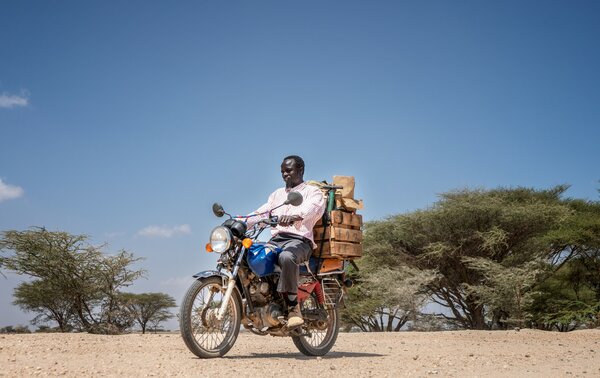
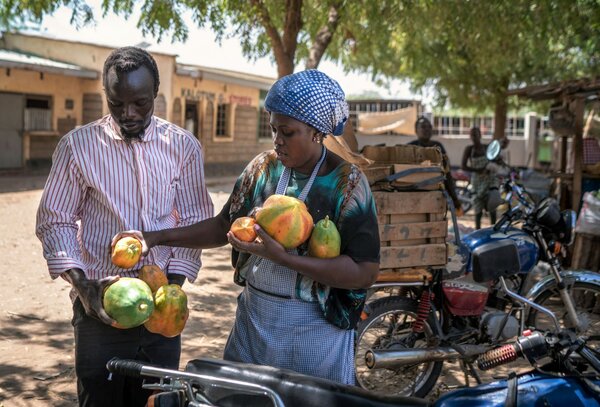
Pawpaw is Simon’s cash crop, earning him the equivalent of US$62 per week, while banana is the family’s staple choice.
“WFP has provided us with seeds and linked us to buyers, which means we can grow more food because we are already connected to customers,” he explains.
In the near future, WFP plans to install a solar-powered irrigation system for Simon and other farmers in the area, introducing clean energy and saving on the cost of fuel.
WFP's resilience and livelihoods activities in Kenya are funded by the governments of Canada, Germany, Japan, The Republic of Korea, Sweden and the United States of America.

